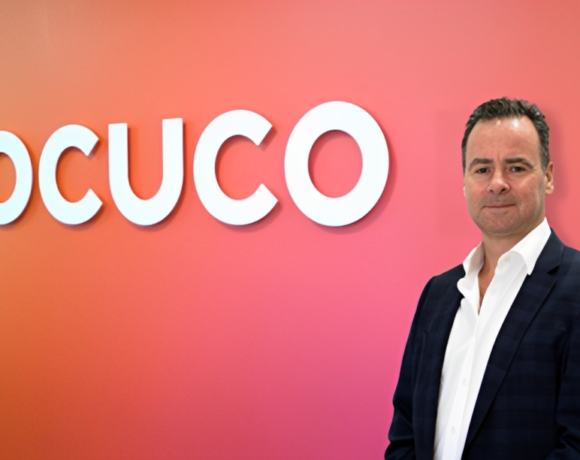The suddenness and depth of Ireland’s recent recession created immeasurable challenges for local authorities. Right across the country, councils have had to balance the need to operate more efficiently with the desire to deliver better services to improve citizens’ lives. At the same time, local authorities have been under increased pressure to reduce spending and to offer improved and indeed new services to communities.
Now, more than ever, it is critical that government both central and local make full use of their available resources. Geographic Information Systems (GIS) is one such resource that is helping local authorities right across Ireland to achieve these goals.
Knowing where things happen matters
GIS is based on the simple principle of attaching a location to every piece of data. In addition to answering questions about “who”, “what” and even “how much”, GIS can help reveal “where” activity has taken place. Everything happens somewhere and many public and private sector companies use the power of “place” to reveal patterns, trends, and relationships that would not be possible without the use of a map.
Knowing where things are happening, where you have under or over supply, where to deploy your resources and where demand is coming from or likely to increase is vital. GIS enables these questions to be analysed and answered accurately helping make more informed decisions.
Our overarching aim is to better understand our world by putting location data to use. Nowhere is this scenario more relevant than for local authorities. with an estimated 90% of all information used by local government having a location. We are working with local authorities to help unlock access to this information and open it up to anyone that needs to use it.
Today business users and heads of departments in local authorities realise the many benefits of taking a location-based approach to business. As a result local authorities are recognising that ‘place’ is an increasingly important variable in the provision of value for their internal and external stakeholders.
GIS is not a new innovation in Irish local authorities, many have already made use of GIS to support the work of many different departments. But for many years its use and application was comprised of many disconnected parts and workflows requiring a great deal of time-consuming management and maintenance. This was partly because the data was dispersed across different systems and databases.
When updates were made to one database, employees had to remember to replicate the changes to other databases, a complex process that absorbed valuable time. Also most GIS teams in local authorities are small, one or two people strong, working at maximum capacity, and the day-to-day data and system management can be all consuming.
The council’s internal intranet-based GIS was disconnected from the public facing maps which led to unnecessary administration, and in some cases uncertainty about how to access location information.
A platform approach
It was time to do something different. The vision was to build a single, connected GIS to meet the needs of all members of staff, across all departments, partners and the general public. This is what we refer to as a “Platform Approach.”
In recent years there has been a significant increase in number of local authorities now using GIS as a platform and not simply as a mapping technology. Adopting this “platform approach” now enables the GIS teams in local authorities to work more efficiently and has paved the way for them to deliver new value-added services for the public.
By freeing up their time, GIS professionals within the councils are now able to focus on more strategic issues and forward planning. Rather than being caught up in day-to-day operations they can spend their time working on new innovations and ways to make interaction with the citizens they serve much easier. Councils can integrate the diverse range of information required to plan service provision.
In my opinion the Local Authority GI community is passionate about the value they can bring to their organisation and this is helping to push the boundaries of what can be achieved using geography as a platform. Some of the outcomes include GIS professionals having the time and technology to develop new public services, leading to significant costs and productivity savings.
A single GIS platform supports all users (internally and externally) and all applications from the desktop to the web and smartphones. Data is kept more up-to-date and distributed more quickly to everyone who uses it. The GIS team no longer has to replicate data between databases and maintain different systems.
Furthermore, the council can stream third party resources, such as My Plan, National Parks and Wildlife data, Ordnance Survey Ireland, Environmental Protection Agency & Marine Institute directly into its GIS using web services, saving it days of data preparation and ensuring that the most current version of this data is presented.
As an organisation working with local authorities the key is to collaborate, listen and understand the challenges that we both face and use GIS to find new ways of solving problems together. There is no doubt that GIS is helping local authorities reduce costs while providing an improved service to both the internal workforce and the public.
Today, GIS technology is advancing rapidly, providing many new capabilities and innovations for local authorities. This provides a platform for better decision making – not only mapping and visualisation but also modelling, spatial analysis, data management, web services and mobile solutions. GIS is being used everywhere to help solve real problems and confront new challenges.
I have been encouraged by the knowledge and passion that we have encountered with the local government GI community. Over the past number of years, we have gained a deeper understanding of the issues that local authorities are facing. Thankfully the indications are that a platform approach to GIS is helping make a real difference and I would suggest that maps will make sense for Local Government for a long time to come.
Dermot O’ Kane, Esri Ireland
About Esri Ireland
Esri Ireland is the Irish partner of long-established global GIS firm Esri Inc., headed by industry pioneer Jack Dangermond in California. Esri Ireland’s business is built on the belief that knowing where things happen matters. Esri Ireland is a software and services organisation specialising in the application of GIS , helping customers record where things happen and analyse why, to give business insight on which they can make better decisions.
Since 2002 Esri Ireland has partnered with both the public and private sector to help understand the imapact of geography on their business. They employ 45 people locally in Dublin and Belfast and are part of the Esri Global Network.














